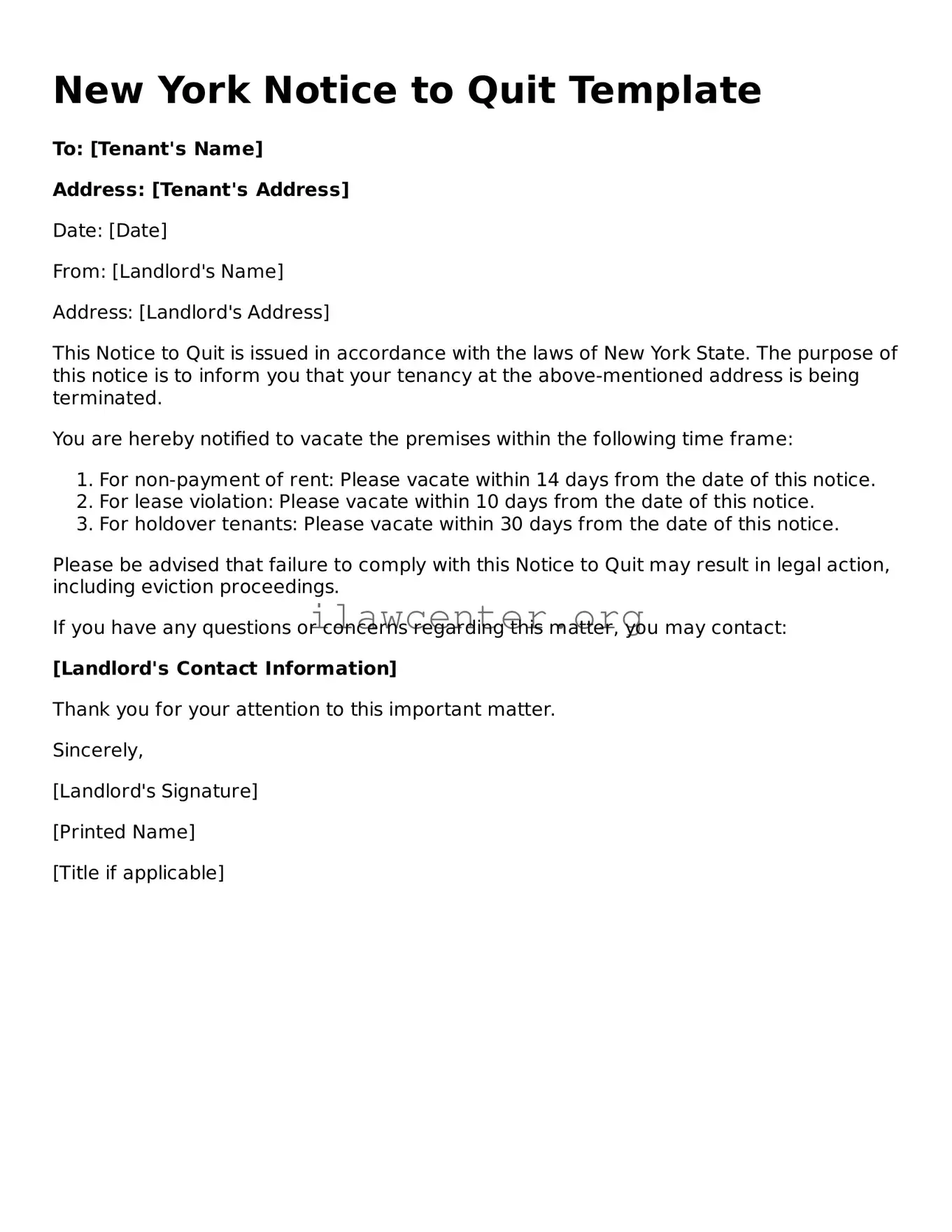What is a Notice to Quit in New York?
A Notice to Quit is a formal document used by a landlord to inform a tenant that they must vacate the rental property. This notice typically occurs when a tenant fails to pay rent, violates lease terms, or the landlord wishes to end a month-to-month tenancy. It serves as the first step in the eviction process.
How much notice does a tenant receive on a Notice to Quit?
The amount of notice required can vary depending on the reason for the eviction. Generally, landlords must provide 14 days' notice for nonpayment of rent. For lease violations, landlords typically give 10 days, and for month-to-month tenancies, the notice may be 30 days. Always refer to specific local laws for regional variations.
Can a tenant respond to a Notice to Quit?
Yes, tenants have the right to respond to a Notice to Quit. They can address any discrepancies or concerns regarding the notice. It's advisable for tenants to communicate with their landlord promptly, as resolution before formal eviction can often be achieved.
What happens if a tenant ignores the Notice to Quit?
If a tenant ignores the Notice to Quit, the landlord may proceed with eviction proceedings. This involves filing for eviction in court. Ignoring the notice can lead to a judgment against the tenant, resulting in potential eviction and possible financial liability for unpaid rent.
Is a Notice to Quit the same as eviction?
No, a Notice to Quit is not an eviction itself. It is a preliminary step that alerts the tenant of the landlord’s intention to terminate the lease. Actual eviction occurs only after a court has ruled in favor of the landlord, allowing them to remove the tenant from the property.
Are there specific requirements for the form of a Notice to Quit?
While New York law does not mandate a specific format for a Notice to Quit, it must include important details such as the tenant's name, the address of the rental property, the reason for termination, and the deadline for vacating the premises. It should be clear and unambiguous to reduce confusion.
Can a landlord file a Notice to Quit without a cause?
A landlord can terminate a month-to-month tenancy without cause by providing the appropriate notice. However, for leases with a fixed term, a landlord typically needs a valid reason, such as non-payment or lease violations, to issue a Notice to Quit.
What should tenants do after receiving a Notice to Quit?
Upon receiving a Notice to Quit, tenants should evaluate their circumstances. They might consider paying any overdue rent if that is the basis for the notice or resolving lease violations. Consulting an attorney for legal advice can also be beneficial to understand their rights and options.
Can a tenant contest a Notice to Quit?
Yes, tenants can contest a Notice to Quit, especially if they believe the notice is unjust or improperly served. They can raise their objections in court during the eviction proceedings. Documentation supporting their case, like proof of payment or lease agreements, can be crucial.
What are the consequences of an unlawful Notice to Quit?
If a Notice to Quit is served unlawfully, tenants may have grounds for a legal defense against eviction. They could potentially counterclaim for damages or seek a court order to remain in the property. Legal consultation is vital in these situations to navigate the applicable laws effectively.
